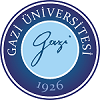
Send us your opinions, requests and evaluations.
VESTIBULAR REHABILITATION UNIT
Vestibular Rehabilitation is an exercise-based treatment for the management of symptoms associated with vestibular system disorders. The vestibular system is a link between the vestibular receptors in the inner ear and other areas in the central nervous system, keeping steady and balanced while moving and performing everyday tasks. When the vestibular system is disrupted by an illness, injury, or the aging process the resulting symptoms include dizziness, vertigo, loss of balance, vision problems, nausea. The most commonly diagnosed vestibular disorders include benign paroxysmal positional vertigo (BPPV), labyrinthitis or vestibular neuritis, Meniere’s disease. Vestibular disorders also include superior semicircular canal dehiscence, acoustic neuroma, perilymph fistula, ototoxicity, enlarged vestibular aqueduct, migraineassociated vertigo, and Mal de Débarquement. The exercise-based treatment helps reduce dizziness, vertigo, imbalance issues, and falls. The vestibular rehabilitation program is
individualized according to the patient’s diagnosis and symptom presentation.
The exercises for vestibular rehabilitation can be categorized into three 1) Habituation, 2) Gaze Stabilization, and/or 3) Balance Training. Habituation exercises are used to treat symptoms of dizziness that are produced because of self-motion and/or produced because of visual stimuli. Gaze Stabilization exercises are used to improve control of eye movements. Balance Training exercises are used to improve steadiness so that daily activities for self-care, work, and leisure can be performed successfully.

Send us your opinions, requests and evaluations.